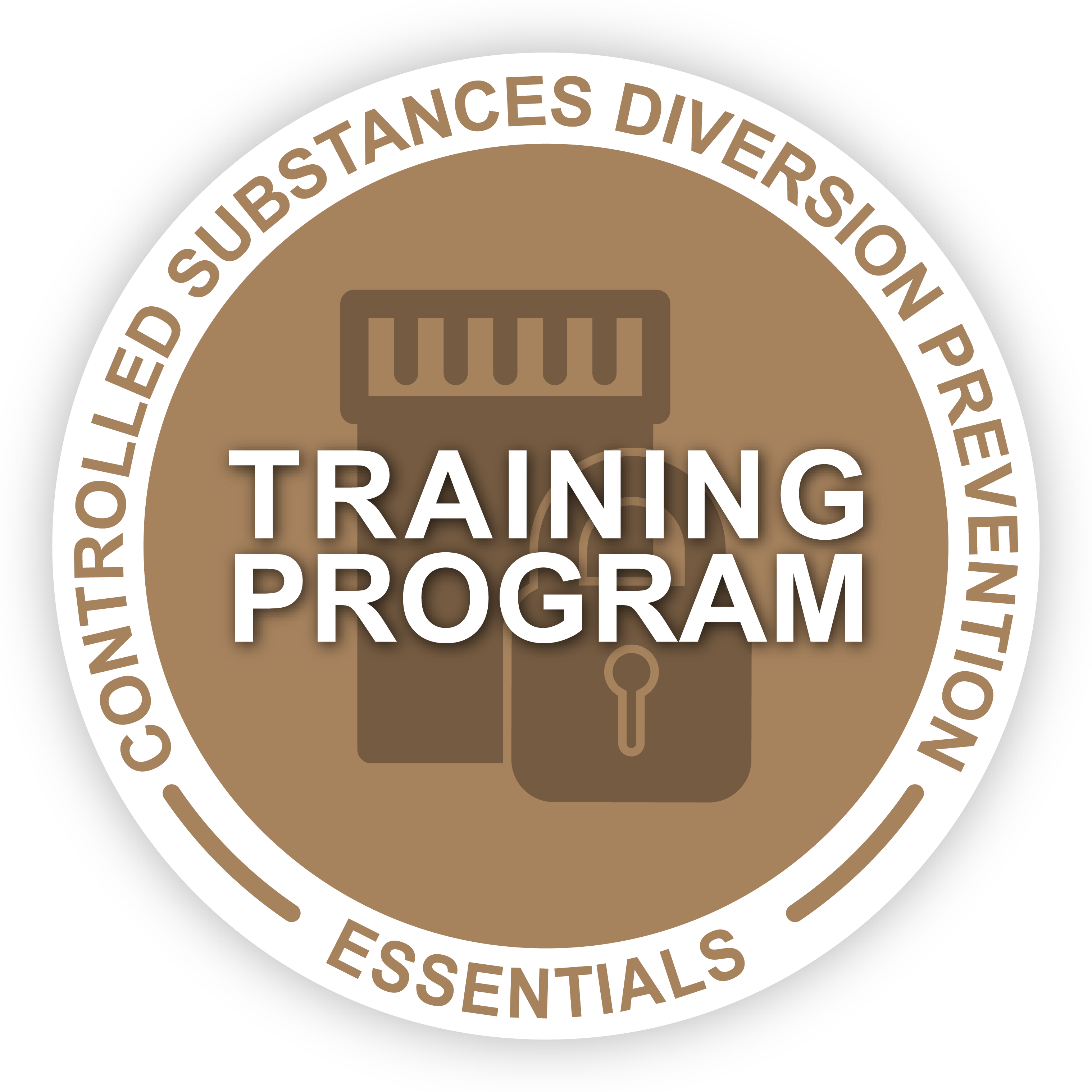 The Controlled Substance Diversion Prevention Certification gives you the knowledge on how to prevent diversion of controlled substances, which could lead to safer patient care and safer communities.
The Controlled Substance Diversion Prevention Certification gives you the knowledge on how to prevent diversion of controlled substances, which could lead to safer patient care and safer communities.
To complete the certification, you must demonstrate your competency in sessions such as:
- Consequences of diversion
- Signs of impaired health-care workers
- Areas of vulnerability in procurement, preparation, and dispensing, prescribing, administration, and waste/removal processes
- Types and functions of security control measures, devices, and software to detect and prevent diversion
- DEA requirements for registration, record keeping, and conducting physical inventories
- Identifying suspicious data patterns, product tampering, and fraudulent prescriptions
Earn your certificate by passing the 70 multiple-choice questions while given the 1.5 hours for the exam broken up in this way:
- Controlled Substance Diversion 9%
- Controlled Substance Diversion Prevention Program 30%
- DEA Requirements 38%
- Surveillance and Investigation 23%
To learn more about NPTA’s related training programs, such as the Immunization Administration, click here.
Learning Objectives:
At the completion of this program, participants will be able to:
• Define diversion, its motivating and contributory factors
• Explain the consequences of drug diversion
• Describe the factors contributing to impairment and signs associated with impaired health care workers
• Discuss the effects of impairment on society
• Identify methods to detect, prevent and respond to drug diversion
• Describe the Controlled Substance Act
• Discuss the law related to controlled substances
• List the regulatory agencies related to controlled substances
• Explain the DEA requirement and forms
• Describe the validation processes of DEA number
• Define DEA Controlled Substance Ordering System (CSOS)
• Discuss the effort to prevent drug diversion in pharmacy
• Describe the steps of selling BTC medication
• Review Controlled Substances Diversion in Pharmacy Practice.
• Identify risk points and methods of diversion.
• Recognize signs of product alteration or tampering
• Consider surveillance practices, recommendations and resources to identify and investigate potential diversion.
• Discuss signs of and methods to detect fraudulent prescriptions.
• Areas of vulnerability in procurement, preparation and dispensing, prescribing, administration, and waste/removal processes
• Elements of a comprehensive and effective controlled substances diversion prevention program (CSDPP)
• Types and functions of security control measures, devices, and software to detect and prevent diversion (e.g., locking storage, cameras, ADCs, analytics software)
• High risk areas of the pharmacy (e.g., anesthesia area, CS vault, IV room, will call, receiving)
• Chain of custody methods (e.g., regulation of access control, presence of witnesses for signing delivery sheets, use of tamper-evident containers)
Accreditation Information:
The National Pharmacy Technician Association (NPTA) is accredited by the Accreditation Council for Pharmacy Education as a provider of continuing education. This CPE activity has been designated as a knowledge-based program. No faculty members had any conflicts of interest to disclose.
ACPE UAN: 0384-9999-20-002-H04-T
4 contact hours/ 0.4 CEU
Release Date: 10-01-2020 Expiration Date: 10-01-2023







.png)